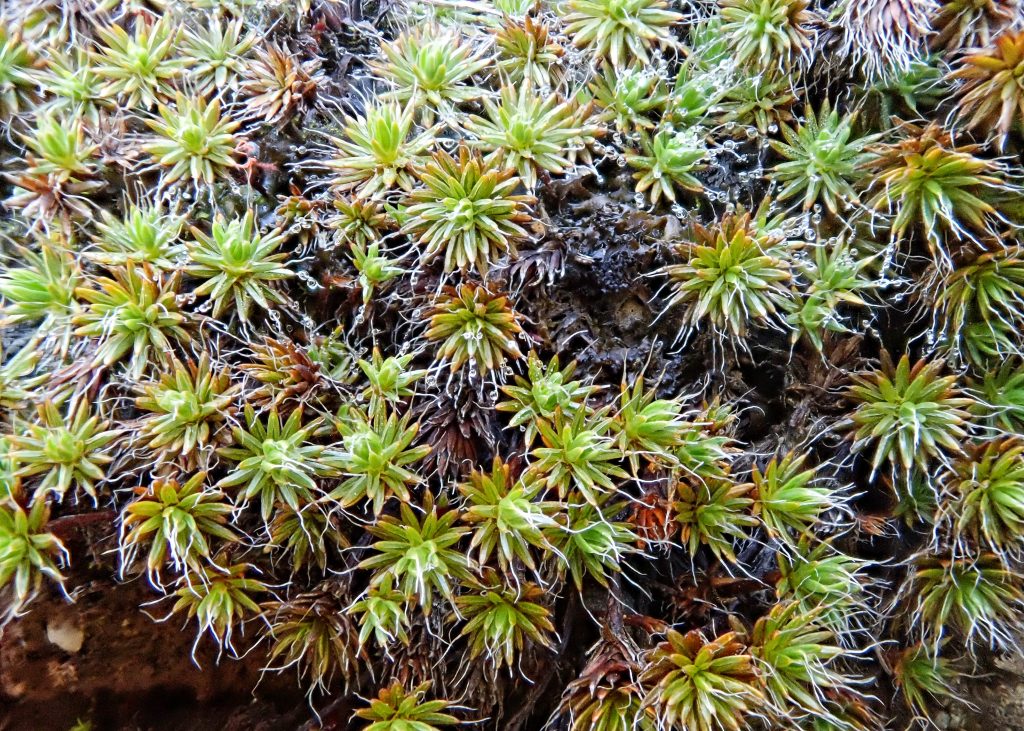
This moss is unusual amongst mosses of my experience, although it is apparently a very common species, because it was actually easy to identify, even without magnification. The seemingly very thick leaves, that initially made me wonder if this was a succulent or a moss, turned out to be one of a combination of two easily observed characteristics which are diagnostic for this species.
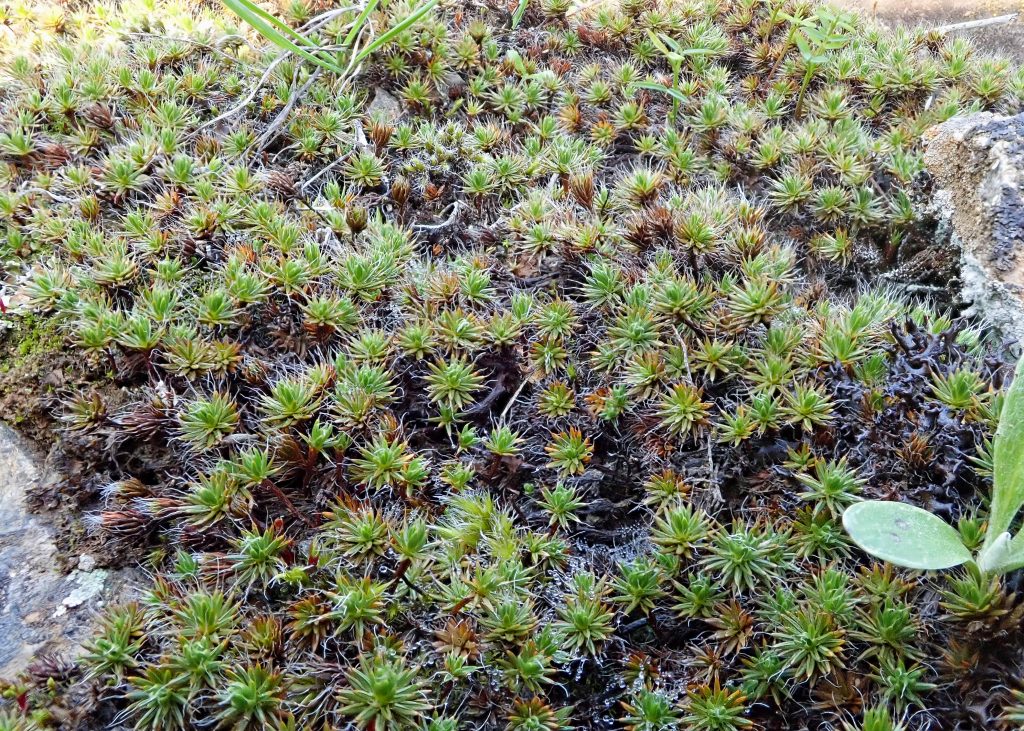
The leaves are not, in reality, all that thick. As is typical for the family Polytrichaceae, they have lamellae on the dorsal surface, which are closely set, pliable walls that are a few cells long by a few cells tall, and one cell thick, which occur on the top of the leaf. The purpose of these lamellae are to increase surface area for photosynthesis, and to create air pockets. The reason the air pockets are important is that, while the cells must be hydrated for carbon dioxide to penetrate (from whence comes the carbon necessary to synthesis glucose from sunlight and water) a film of water would prevent the CO2 from getting in, and the ‘waste’ oxygen from getting out.
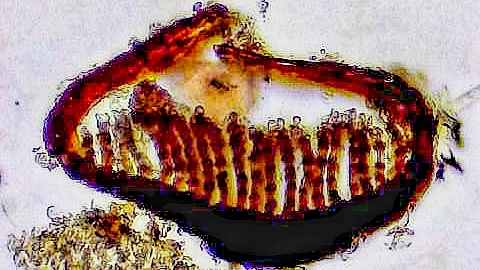
What is distinctive about this species is that the lamellae are densely packed over most of the width of the leaf, and the margins of the leaves are incurved (folded over the dorsal side of the leaf; the opposite of recurved, which means curving toward the ventral side) over these lamellae, giving the leaves the appearance of being ‘thick’.
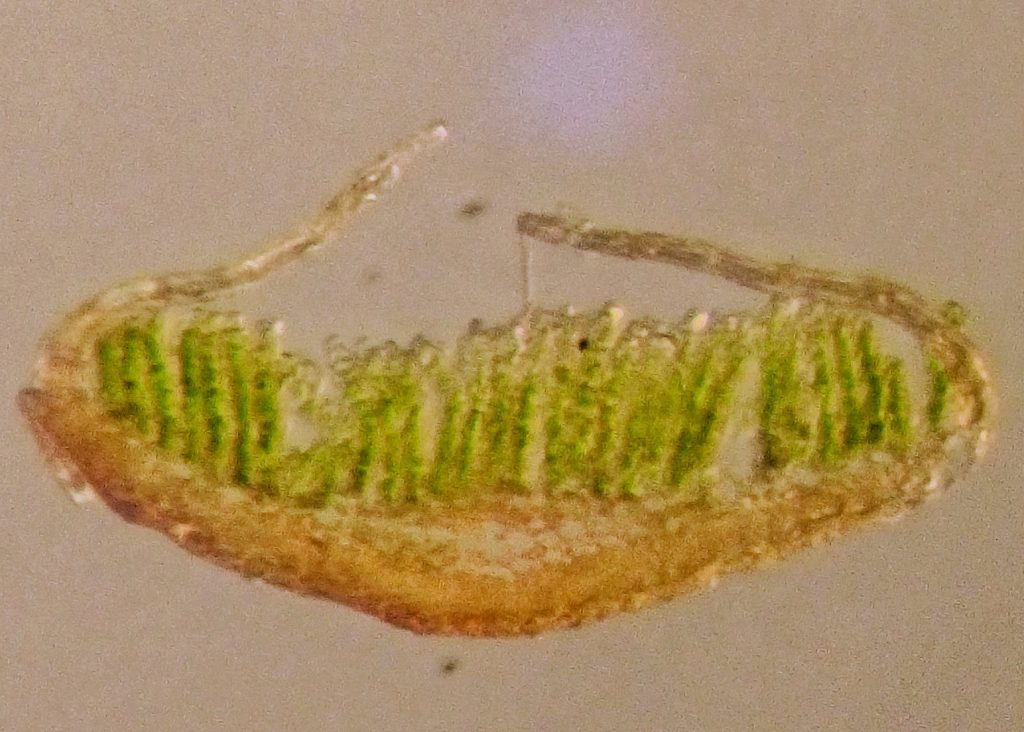
The other trait that, in conjunction with the incurved leaves and dense lamellae, is diagnostic of Polytrichum piliferum is the presence of long, hyaline (unpigmented and translucent) awns (hairlike bristles growing from the tip of the leaf), as opposed to pigmented or bi-colored ones. Awns are not uncommon in mosses in general, and Polytrichum in particular (a colloquial name for them is haircap mosses), and are thought to have moisture absorption, gathering, and channeling functions.
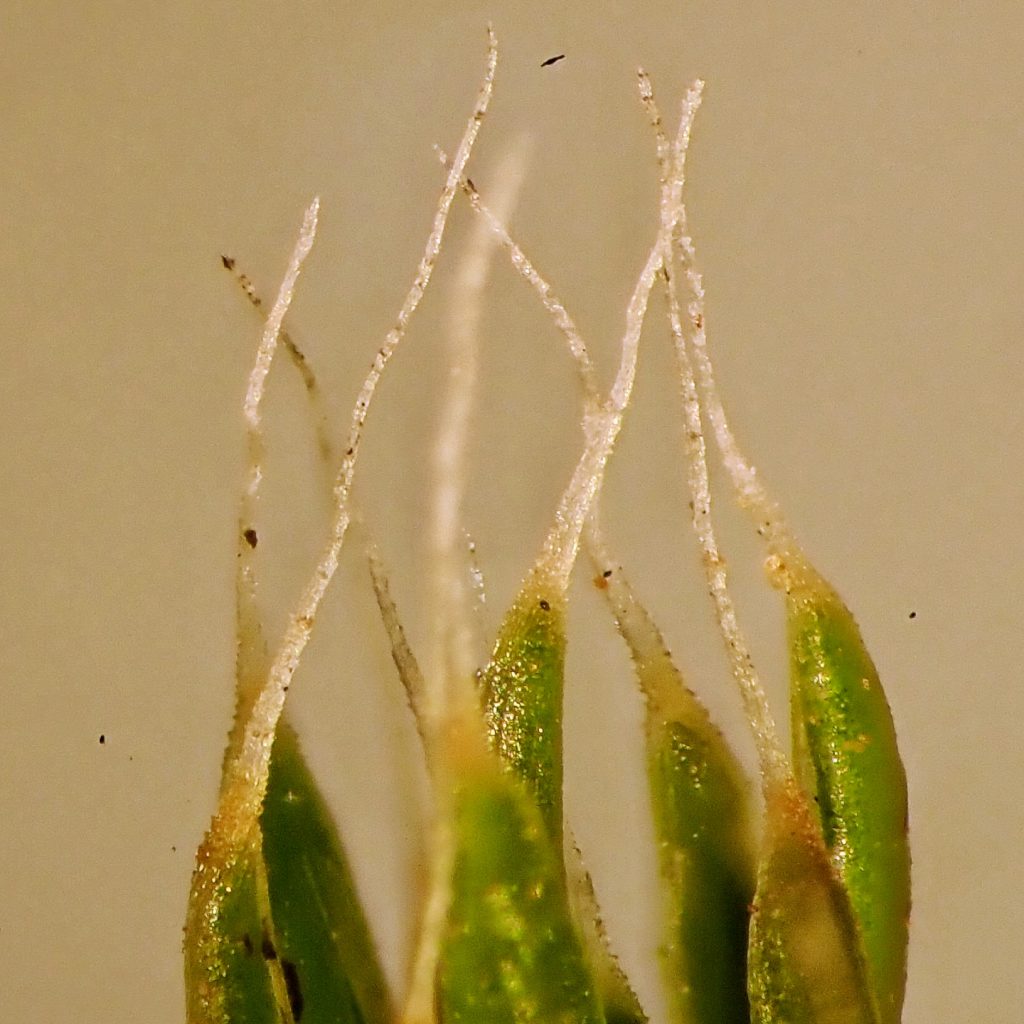
Description– Small, erect tufts, often growing in dense clusters, with green to reddish brown leaves that are spreading when moist; leaves lanceolate, with dense lamellae in upper 2/3, and incurved margins; the awn is long, toothed, and hyaline.
Similar species– Polystrichum juniperinum is larger and has reddish awns. All other Polytrichum do not have incurved leaf margins.
Habitat– Well drained soil, and soil over rock, in open, often dry, areas.
Range– Region wide in appropriate habitat. More common east of the Cascades.
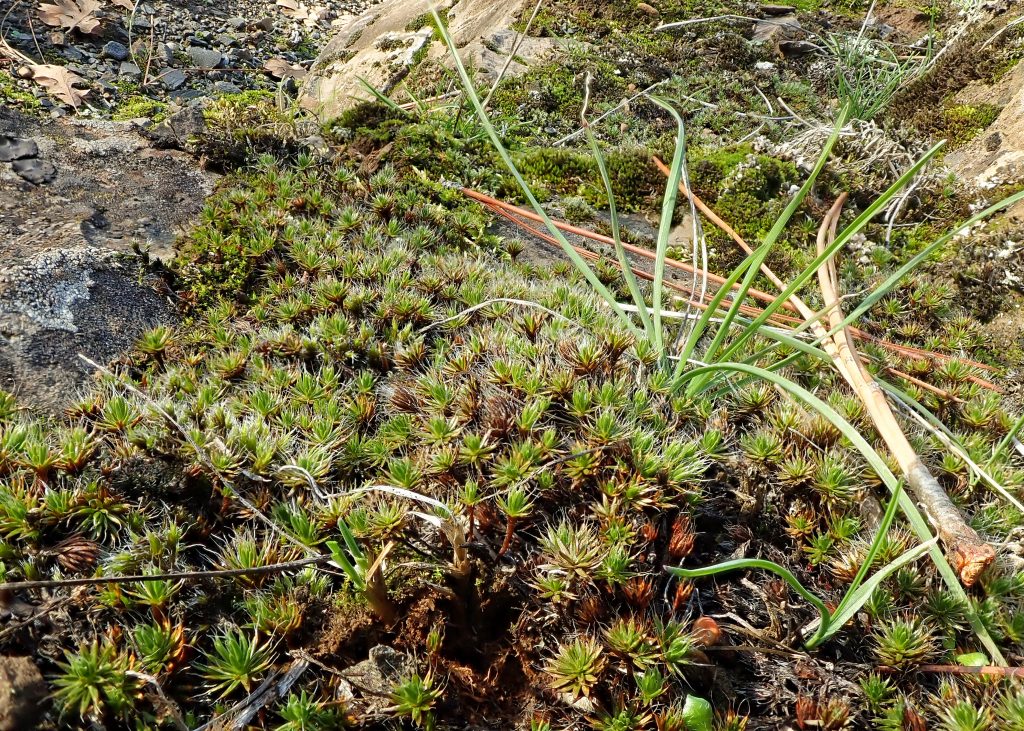
Reproductive timing– Sporophytes formed in summer
Etymology of names– Polytrichum means ‘many hairs’ in Greek, and refers to the hairy calyptra (the cap on the spore containing capsule of the sporophyte); the species epithet is less clear, but pili- is Latin for a single hair, and -ferum is derived from the Latin word for ‘wild, untamed’. My uneducated guess is that the switch in language roots implies that this is talking about different hairs, and I think it’s probably the awns.
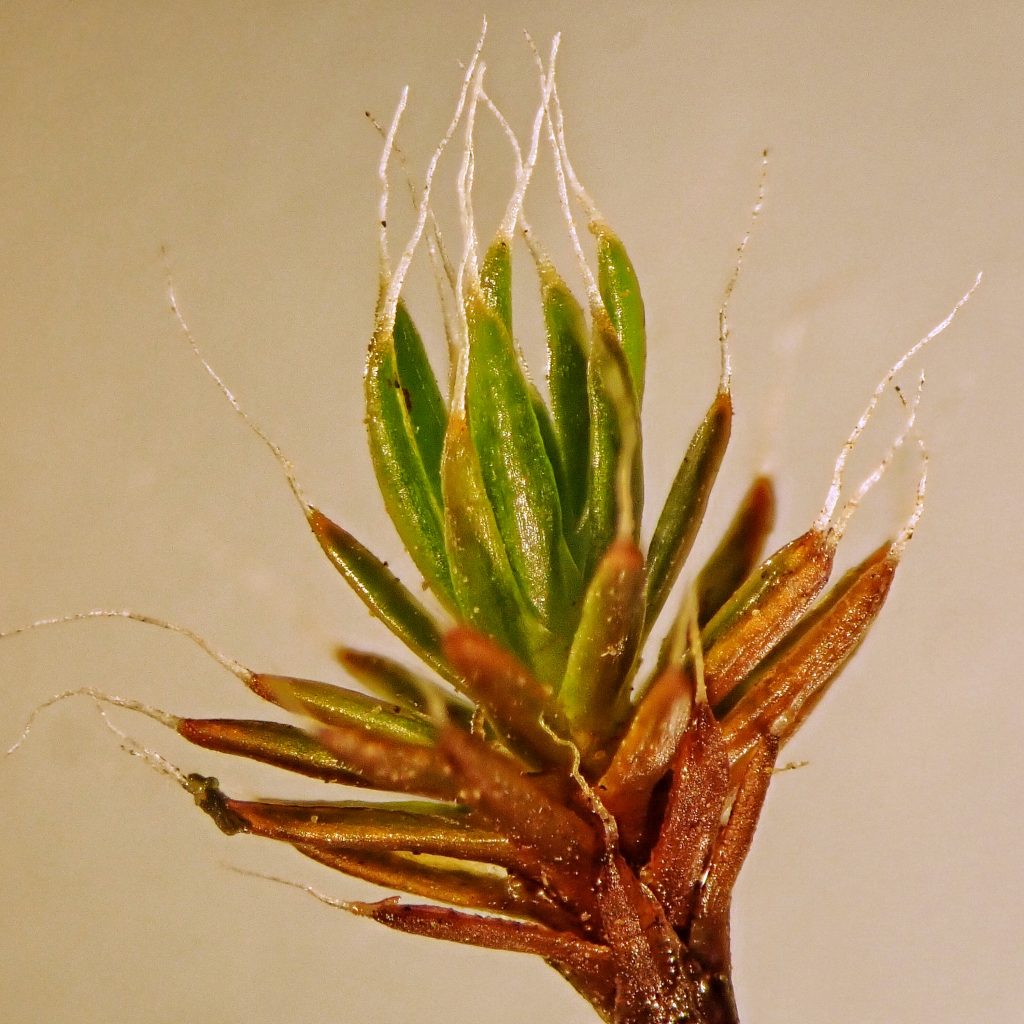
http://fieldguide.mt.gov/speciesDetail.aspx?elcode=NBMUS5T080
http://www.efloras.org/florataxon.aspx?flora_id=1&taxon_id=200002675
https://www.jstor.org/stable/3244431
http://mossplants.fieldofscience.com/2010/04/lamellae-story-debunked.html?m=1
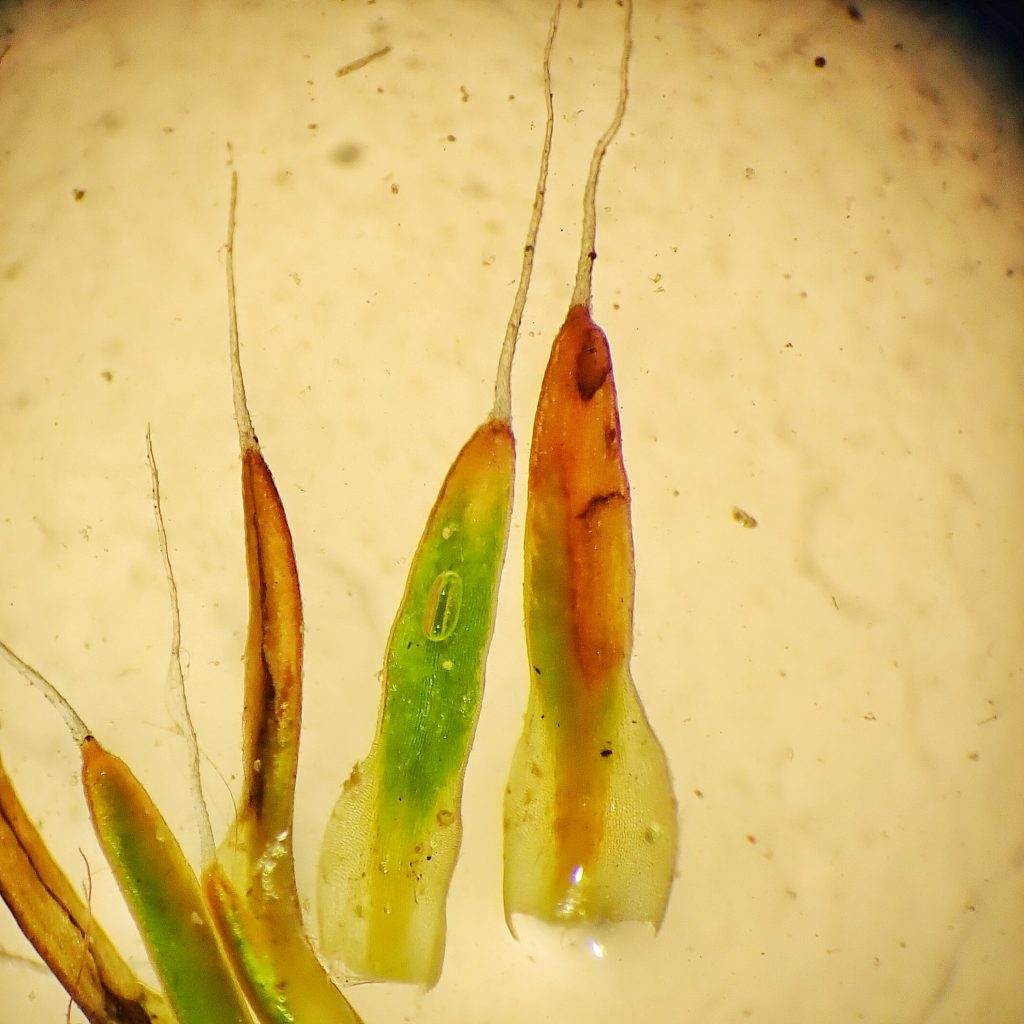
A pretty moss that does make one think of a succulent plant! Thank you! 👍